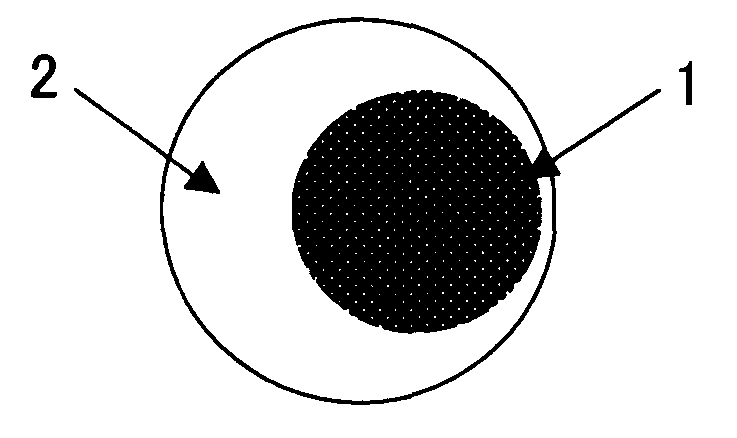Fiber for wetlaid non-woven fabric
a non-woven fabric and fiber technology, applied in the field of fibers, can solve the problems of difficult to achieve high uniformity, difficult to use dry processing methods for obtaining high uniformity, and significant dispersion irregularities, and achieve uniform uniformity and good fiber dispersibility
- Summary
- Abstract
- Description
- Claims
- Application Information
AI Technical Summary
Benefits of technology
Problems solved by technology
Method used
Image
Examples
examples
[0085]Next, the present invention is specifically described using examples, but the present invention is not limited to the following examples only. It should be noted that the definitions of the terms and the measurement methods used in the examples and comparative examples are as follows.
[0086](1) Melting point: (unit: ° C.)
[0087]The temperature corresponding to the peak on a fusion absorption curve, which is obtained when increasing the temperature of a thermoplastic polymer at 10° C. / min, is taken as a melting point of the thermoplastic polymer by using a differential scanning calorimeter DSC-Q10 manufactured by TA Instruments.
[0088](2) MFR: (unit: g / 10 minutes)
[0089]Measured according to JIS-K-7210, Condition 14 (230° C., 21.18 N). MFR is a value measured using the thermoplastic polymer as a specimen.
[0090](3) Q value: (weight-average molecular weight / number average molecular weight)
[0091]Q value is a ratio (Mw / Mn) between the weight-average molecular weight (Mw) and the number...
example 1
[0128]The fiber (A-1) and the fiber (B-1) were dispersed uniformly in water to create a web using a cylinder paper machine, and this web was dehydrated, subjected to a drying process, and thermally adhered at 130° C. using a suction through-air machine to obtain a target paper. The dispersibility of the fibers of the web was good, and the heat shrinkage was produced uniformly. Moreover, the specific volume of the obtained paper was 16.8 cm3 / g, which indicates that the paper is bulky, and the paper strength was as high as 54.1 N / 5 cm.
example 2
[0129]The fiber (A-2) and the fiber (B-1) were dispersed uniformly in water to create a web using a cylinder paper machine, and this web was dehydrated, subjected to a drying process, and thermally adhered at 130° C. using a suction through-air machine to obtain a target paper. The dispersibility of the fibers of the web was good, and the heat shrinkage was produced uniformly. Moreover, the specific volume of the obtained paper was 18.4 cm3 / g, which indicates that the paper is extremely bulky, and the paper strength was as high as 50.5 N / 5 cm.
PUM
| Property | Measurement | Unit |
|---|---|---|
| diameter | aaaaa | aaaaa |
| length | aaaaa | aaaaa |
| melting point | aaaaa | aaaaa |
Abstract
Description
Claims
Application Information
 Login to View More
Login to View More - R&D
- Intellectual Property
- Life Sciences
- Materials
- Tech Scout
- Unparalleled Data Quality
- Higher Quality Content
- 60% Fewer Hallucinations
Browse by: Latest US Patents, China's latest patents, Technical Efficacy Thesaurus, Application Domain, Technology Topic, Popular Technical Reports.
© 2025 PatSnap. All rights reserved.Legal|Privacy policy|Modern Slavery Act Transparency Statement|Sitemap|About US| Contact US: help@patsnap.com


